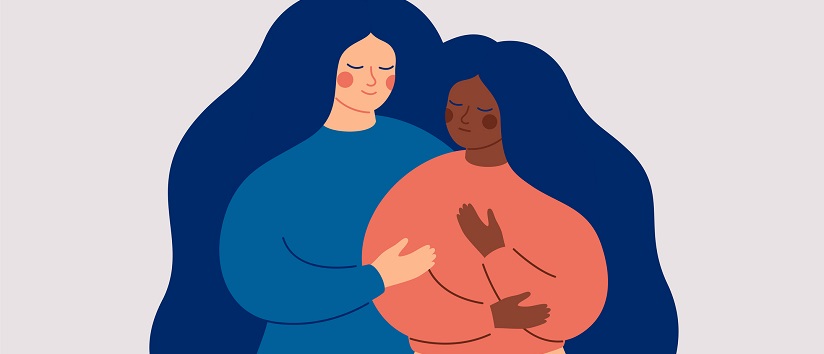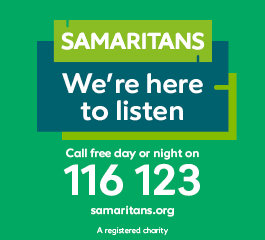Safeguarding yourself and others from traumatic media
20 August 2021
The past seventeen months have been, in many ways more filled with trauma and distress than most years many of us will have ever experienced. From the constant media influx of recorded deaths due to Covid-19, the Black Lives Matter (BLM) protests after the murder of George Floyd on 25th of May last year, the kidnap, rape and murder of Sarah Everard; the subsequent vigils and ‘Kill the Bill’ protests to now looking on as those in Afghanistan are once again in fear of the Taliban regime that looks set to take over the country.
The media in 2021, whether that be a news outlet or in the form of a live Twitter stream, is in a state of constant flow, 24/7 in a way it has never been before. In many ways this can be a positive thing, we are connected to people half-way across the world that normally we would never get the chance to support, send aid to or admire and acknowledge their efforts.
The other side to this coin is that the constant news stream, friends and loved ones sharing stories, videos and updates on their social media, can take its toll
I am acutely aware that this toll comes from a place of privilege. Those exposed to trauma first-hand do not have the privilege of stopping and worrying about how much vicarious trauma they might be experiencing through a screen. Because they’re in it.
However, I have seen repeated patterns of how this desire to ‘bare witness’ can become damaging to mental health. This desire oftentimes comes from a place of unconscious guilt for many western, white people, leading to things like ‘doomscrolling’, watching a long queue of traumatic news footage on YouTube or sharing explicit violent images and videos on Twitter, which at the same time as vicariously traumatising the person watching and retweeting can also inadvertently trigger trauma in people who have actual personal lived experience of the thing that is being shared.
Vicarious trauma and secondary trauma
On the British Medical Association’s (BMA) website, they describe vicarious trauma specifically as it pertains to medical health and mental health professionals who engage with survivors of trauma. The BMA lists these symptoms as some of the common signs of vicarious trauma:
- ‘lingering feelings of anger, rage and sadness about patient’
- ‘becoming overly involved emotionally’
- ‘bystander guilt, shame, feelings of self-doubt’
- ‘preoccupied with thoughts’
- ‘overidentification’
- ‘loss of hope, pessimism, cynicism’
Secondary trauma is similar but more often experienced as a result of being a loved one, friend or carer for someone who has survived something traumatic.
This could all very easily apply to how the majority of us have responded to the past year
In an article on ‘compassion fatigue’ Vrinda Garg explains what is understood as the ‘negative cost of caring’ and that it occurs due to “witnessing prolonged trauma or working with victims of trauma and suffering.” Garg explains how in the field of traumatology, compassion fatigue or ‘empathy fatigue’ researchers have found it can “burden one with negative emotions and leaves them feeling like a ‘secondary survivor’”.
Garg further elucidates that people in professional fields such as the medical profession, therapists, NGO workers or even lawyers are often cited as the most likely to experience this. However, Garg also emphasises that the environment of the Covid-19 pandemic has resulted in many people feeling “empty or burnt out”.
Similarly, media outlets such as Teen Vogue and Refinery29 have written on how the events surrounding the murder of George Floyd last year, the protests that quickly turned extremely violent on the part of the police and the seemingly infinite stream of shared images and videos, were forcing Black people to experience vicarious trauma.
In his piece for Teen Vogue, Miles Holder wrote: “One study found that police killings of unarmed Black Americans contribute on average 1.7 additional poor mental-health days per person per year, among black American adults in the United States.” Providing substantiated proof that the influx of distressing images related to these crimes has a real-world negative impact on Black people’s mental health.
On a personal note, as all of this was happening in the US, us in the UK were watching - not shocked, because racially motivated police violence has become too frequent to claim the ignorance of shock - but feeling increasingly upset and angry at what we were seeing, I was spending whole evenings in lockdown and on furlough obsessively consuming what was happening and relaying it all to my partner. My partner, who is Black eventually had to tell me to stop, that he had made a choice to stop reading or watching the upsetting and mentally damaging content.
It was a moment of realisation, that I, a White woman, who felt a responsibility to ‘bare witness’ hadn’t considered what this was doing to him and the part of him that is inextricably tied to being Black. I had failed to see this ignorance on my part.
There’s a part of me that wants to dwell in the shame I feel for not having the progressive thought, or presence of mind to identify that, before it got to the point of him having to ask me to stop. Instead, I am motivated to share this story so that other White people can identify what they’re doing when they share these images or report instances of violence to their Black or Brown loved ones and friends.
As Molly Longman said in her Refinery29 piece, many white and non-Black People of Colour might have shared these images with the aim of raising awareness, but after months of exposure to upsetting content, many Black activists and public figures called to “stop disseminating and normalising” what Longman refers to as “trauma porn”.
- See also: 'Understanding the image – collective trauma, and the psychological impact of racism'
- See also: 'EMDR: the “hyperspace” of processing traumatic memories'
- See also: 'Learning how to support the mental health of refugees and migrants'
This sentiment is particularly important as we are witnessing some truly upsetting footage coming out of Afghanistan in the wake of the Taliban take over.
In light of the very obvious toll that the events around the BLM movement had last year on Black people especially, it is important to apply these lessons that were communicated to us by members of the Black community. If you see a traumatising or upsetting image or video from Afghanistan, ask yourself: if I had family living there would this upset me, would seeing this video upset or distress any of the people in my life, does sharing it actually further the cause of raising awareness/calling for support?
Speaking to SBS News in Australia, Nooria Mehraby who fled Afghanistan almost 30 years ago and who works as a mental health Clinician in Sydney said “When we see pictures on TV…it is an attack to our identity, to our dignity, to our pride.” Mehraby also mentioned that she has been unable to sleep since the images coming out of Afghanistan have been prevalent across News Media outlets.
Dr Ifrah Magan, PHD on Twitter made a very important comment on this topic:
“As a former refugee, I urge y’all to rethink sharing images of people in their most difficult moments. Yes, we need to document and share stories, but there is a big difference between raising awareness and the commodification of human suffering.”
Which relates back to what many Black academics during the BLM movement last year felt. Dr Monnica T. Williams, PHD told Teen Vogue: “The fact that media outlets are showing videos of dying black men is traumatizing in itself. It isn’t considered appropriate to broadcast a white person’s dying moments on television, but that dignity isn’t offered to Black people…it reminds us that society doesn’t value our lives the same.”
So, what can we do to prevent this vicarious trauma?
Be responsible with how and what you consume and share on social media: this goes for everyone of course, but is especially important to consider if you are someone coming from a place of privilege and therefore will not have the same lived experience triggers. Ask yourself the questions mentioned above. Be aware that many people in your life will experience real and impactful vicarious trauma as a result of that content.
Monitor how much news/related content on social media you are consuming: for Very Well Mind, they recommend no more than 30 minutes per day of focused news/social media consumption on a topic that is upsetting or distressing. They also recommend scheduling this in every day, as a “worry time” – this could work particularly well for many of us in the modern day where being totally out of the loop feels ignorant and unrealistic.
Find productive ways to funnel your energy: source great charities to donate to or local efforts to put together relief and support.
Seek out community and support: this is especially relevant to Black and Brown people impacted by the events of the past year. Organisations such as Black Minds Matter, Imkaan, and Inspirited Minds can provide understanding from the perspective of lived experience and give people who are seeking help the opportunity to feel ‘seen’ and represented by the person sat opposite them.
Be kind to yourself and conscious of your actions: this can hold a dual meaning. If you find you’re consuming a lot of distressing and upsetting media, make an effort to do something that counteracts this, something soothing and therapeutic. It also means being generally aware of how you are manoeuvring in the world, what you watch, share and say and how this impacts yourself and those around you.


Comments
Write a Comment
Comment Submitted